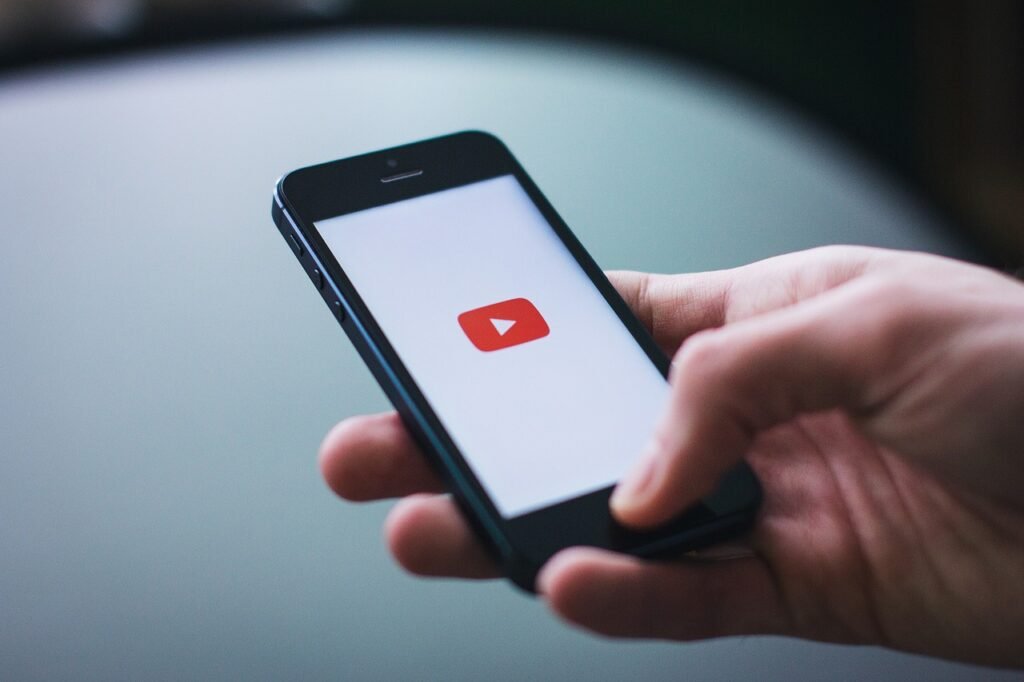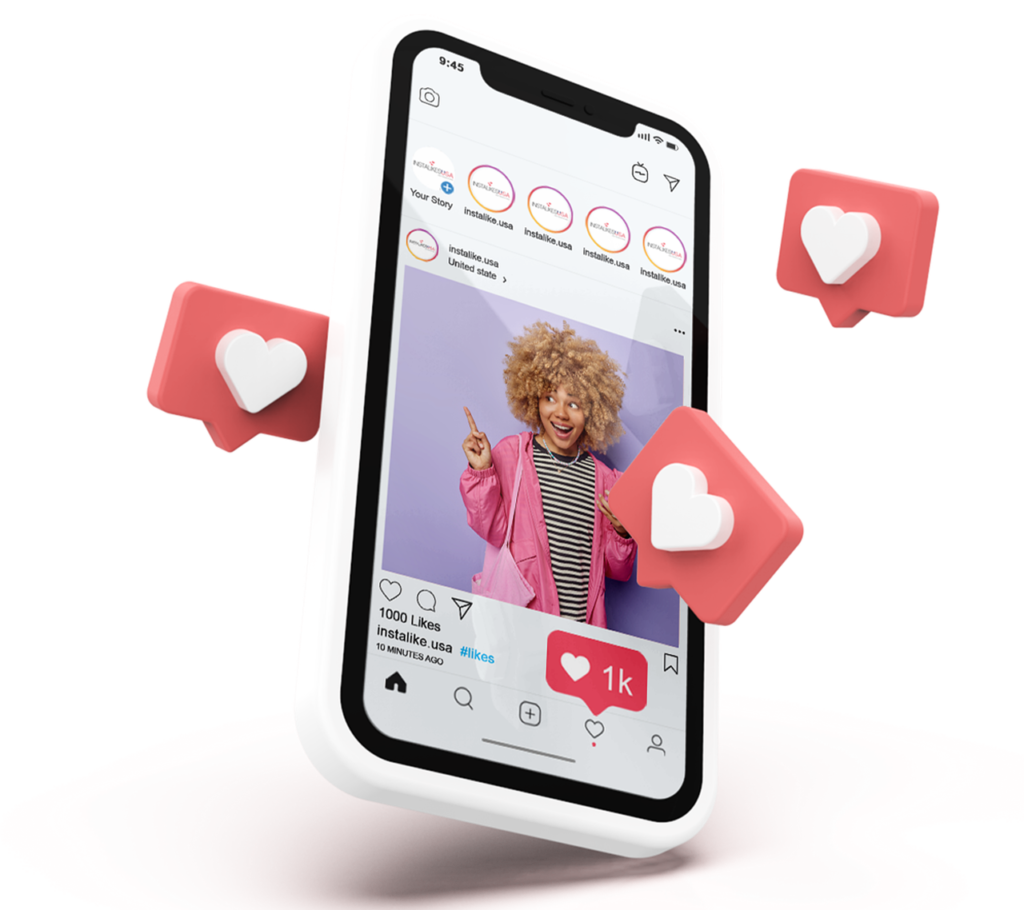- 1. How many people use social media globally?
- 2. How do social media users research products?
- 3. What percentage of Instagram users follow business accounts?
- 4. How many monthly active users does Facebook have?
- 5. What percentage of U.S. adults use Facebook?
- 6. How many members does LinkedIn have worldwide?
- 7. What percentage of LinkedIn members drive business decisions?
- 8. How many monthly active users does Twitter have?
- 9. How do Twitter users feel about brand interactions?
- 10. How many logged-in monthly users does YouTube have?
- 11. How does YouTube compare to TV networks in reaching young adults?
- 12. How many monthly active users does Pinterest have?
- 13. How do Pinterest users utilize the platform for projects?
- 14. What is the gender distribution of Pinterest users?
- 15. How many monthly active users does TikTok have?
- 16. How much time do TikTok users spend on the app daily?
- 17. How many daily active users does Snapchat have?
- 18. How popular is Snapchat among young internet users in the U.S.?
- 19. How do Pinterest users discover new products?
- 20. How widely are Instagram Stories used?
- 21. How much of the global population do Facebook ads reach?
- 22. How popular is Instagram for influencer marketing?
- 23. How effective is LinkedIn for B2B lead generation?
- 24. What is the projected social media ad spend by 2024?
- 25. How does a positive social media experience influence brand recommendations?
- 26. How effective are social media videos in generating leads?
- 27. How influential are social media influencers in consumer decisions?
- 28. How does social media marketing impact brand loyalty?
- 29. How prevalent is social media marketing among large companies?
- 30. Why do consumers follow brands on social media?
- We got all the latest Marketing Stats here:
In the ever-evolving digital landscape, social media has become a cornerstone of strategic marketing for businesses of all sizes. With billions of users across various platforms, social media offers unparalleled opportunities for brands to connect with their audience, build relationships, and drive growth. Understanding key statistics about these platforms can help marketers craft effective strategies that leverage the unique strengths of each network.
In this article, we’ll explore essential statistics about major social media platforms that can inform your marketing efforts. By diving into these data points, you’ll gain insights into user behavior, platform reach, and the effectiveness of different marketing tactics. Let’s get started with the vital statistics that can guide your social media strategy.
1. How many people use social media globally?

As of 2024, 4.48 billion people use social media globally. This massive number represents a significant portion of the world’s population, making social media an essential channel for reaching a broad and diverse audience. For marketers, this means an immense potential to connect with users across different demographics and regions.
The widespread adoption of social media highlights its importance in daily life, with users spending considerable time on these platforms. Marketers can capitalize on this trend by creating engaging content that resonates with their target audience, driving brand awareness, and fostering community engagement.
2. How do social media users research products?
54% of social browsers use social media to research products. This statistic underscores the importance of having a strong social media presence for brands. Consumers are increasingly turning to social media platforms to gather information, read reviews, and make purchasing decisions.
To leverage this behavior, businesses should focus on providing valuable and informative content about their products or services. This can include customer testimonials, product demonstrations, and engaging posts that highlight key features and benefits. By doing so, brands can influence potential customers during their research phase and drive conversions.
3. What percentage of Instagram users follow business accounts?
90% of Instagram users follow at least one business account. This high engagement rate highlights the platform’s effectiveness in connecting brands with consumers. Instagram’s visual nature makes it an ideal platform for showcasing products, sharing brand stories, and engaging with followers.
Businesses can use Instagram to build a strong brand presence by posting high-quality images, videos, and Stories. Engaging with followers through comments, likes, and direct messages can further enhance relationships and foster loyalty. Additionally, leveraging Instagram’s shopping features can streamline the path to purchase for users.
4. How many monthly active users does Facebook have?
Facebook has 2.9 billion monthly active users, making it the largest social media platform. This vast user base provides an extensive reach for businesses looking to connect with potential customers. Facebook’s diverse demographic profile allows brands to target specific audiences based on interests, behaviors, and location.
Marketers can use Facebook’s robust advertising tools to create targeted campaigns that reach their desired audience. Additionally, maintaining an active presence on Facebook through regular posts, engagement, and community building can help brands stay top-of-mind for users.
5. What percentage of U.S. adults use Facebook?
69% of adults in the U.S. use Facebook. This high penetration rate underscores the platform’s importance for reaching American consumers. For businesses targeting the U.S. market, having a strong Facebook presence is essential.
To maximize their reach on Facebook, businesses should focus on creating engaging and relevant content that resonates with their audience. Utilizing Facebook’s ad targeting capabilities can also help brands reach specific demographics and drive better results from their marketing efforts.
6. How many members does LinkedIn have worldwide?
LinkedIn has over 900 million members worldwide. As the leading professional networking platform, LinkedIn offers unique opportunities for B2B marketers to connect with decision-makers and industry professionals.
Businesses can leverage LinkedIn to build their brand authority, share industry insights, and engage with a professional audience. Creating thought leadership content, participating in industry discussions, and utilizing LinkedIn’s advertising options can enhance visibility and drive lead generation efforts.
7. What percentage of LinkedIn members drive business decisions?
80% of LinkedIn members drive business decisions. This statistic highlights LinkedIn’s value as a platform for reaching key decision-makers and influencers within various industries. For B2B marketers, LinkedIn is an invaluable tool for networking and lead generation.
To effectively engage this audience, businesses should focus on sharing high-quality, insightful content that addresses industry challenges and trends. Engaging with relevant LinkedIn groups and participating in discussions can also help build credibility and foster valuable connections.
8. How many monthly active users does Twitter have?
Twitter has 450 million monthly active users. This platform is known for its real-time nature, making it ideal for sharing news, updates, and engaging in conversations. For brands, Twitter offers a way to interact with customers, address concerns, and stay relevant in trending discussions.
To make the most of Twitter, businesses should tweet regularly, use relevant hashtags, and engage with followers through replies and retweets. Monitoring brand mentions and participating in industry-related conversations can also enhance visibility and foster community engagement.
9. How do Twitter users feel about brand interactions?
77% of Twitter users feel more positive about a brand when their Tweet has been replied to. This statistic underscores the importance of engagement and responsiveness on Twitter. Brands that actively interact with their followers can build stronger relationships and improve their reputation.
Businesses should prioritize timely and meaningful responses to user interactions on Twitter. By addressing questions, acknowledging feedback, and participating in conversations, brands can demonstrate their commitment to customer satisfaction and foster loyalty.
10. How many logged-in monthly users does YouTube have?

YouTube has over 2.5 billion logged-in monthly users. As the world’s largest video-sharing platform, YouTube offers unparalleled reach and engagement opportunities for brands. Video content is highly effective in capturing attention and conveying information, making YouTube a powerful marketing tool.
Brands can leverage YouTube by creating high-quality video content that educates, entertains, and informs their audience. Optimizing video titles, descriptions, and tags for search can enhance discoverability, while engaging with viewers through comments can build a community around the brand.
11. How does YouTube compare to TV networks in reaching young adults?
YouTube reaches more 18-34 year-olds than any TV network in the U.S. This statistic highlights YouTube’s dominance in reaching the coveted young adult demographic. For brands targeting this age group, YouTube is a crucial platform for engagement and brand awareness.
Creating content that resonates with younger audiences, such as tutorials, product reviews, and behind-the-scenes videos, can help brands connect with this demographic. Collaborating with popular YouTubers and influencers can further amplify reach and credibility.
12. How many monthly active users does Pinterest have?
Pinterest has 465 million monthly active users. This platform is particularly popular for inspiration and planning, making it an excellent tool for brands in industries like fashion, home decor, and DIY.
Businesses can use Pinterest to showcase their products and ideas through visually appealing pins and boards. Creating content that inspires and provides value to users can drive engagement and traffic to the brand’s website. Utilizing Pinterest’s shopping features can also facilitate direct purchases from the platform.
13. How do Pinterest users utilize the platform for projects?
85% of Pinterest users say they use the platform to plan new projects. This statistic underscores Pinterest’s role as a go-to source for inspiration and planning. Brands can tap into this behavior by creating content that aligns with users’ interests and projects.
By sharing step-by-step guides, DIY projects, and inspirational ideas, businesses can engage users and position themselves as helpful resources. This approach can drive traffic to the brand’s website and increase the likelihood of conversions.
14. What is the gender distribution of Pinterest users?
70% of Pinterest users are women. This significant female user base makes Pinterest an ideal platform for brands targeting women. Understanding the preferences and interests of this demographic can help businesses create more effective and engaging content.
Brands in industries like fashion, beauty, home decor, and wellness can particularly benefit from a strong Pinterest presence. Creating visually appealing pins and boards that cater to women’s interests can enhance engagement and drive traffic to the brand’s website.
15. How many monthly active users does TikTok have?
TikTok has over 1 billion monthly active users. This rapidly growing platform is known for its short-form video content and has become a major player in the social media landscape. For brands looking to reach a younger audience, TikTok offers immense potential.
Businesses can leverage TikTok by creating entertaining and authentic content that resonates with the platform’s users. Participating in trends, challenges, and collaborations with influencers can further enhance visibility and engagement. TikTok’s advertising options also provide opportunities for targeted campaigns.

Related: Check out our free tools:

16. How much time do TikTok users spend on the app daily?
TikTok users spend an average of 52 minutes per day on the app. This high level of engagement makes TikTok an attractive platform for brands seeking to capture users’ attention and drive brand awareness.
To capitalize on this engagement, businesses should focus on creating compelling and relatable content. Understanding TikTok’s unique culture and trends can help brands create videos that resonate with users and encourage interaction. Consistency in posting and engaging with followers can also build a loyal community around the brand.
17. How many daily active users does Snapchat have?
Snapchat has 375 million daily active users. Known for its ephemeral content, Snapchat offers unique opportunities for brands to connect with users through engaging and interactive content.
Brands can use Snapchat to share behind-the-scenes glimpses, product launches, and exclusive offers. Utilizing features like Stories, lenses, and filters can enhance engagement and create memorable experiences for users. Partnering with influencers on Snapchat can also amplify reach and credibility.
18. How popular is Snapchat among young internet users in the U.S.?
48% of U.S. internet users aged 15-25 use Snapchat. This statistic highlights Snapchat’s popularity among teenagers and young adults, making it a crucial platform for brands targeting this demographic.
To effectively engage with young users on Snapchat, brands should focus on creating fun, interactive, and authentic content. Leveraging features like Snapchat Stories, filters, and lenses can enhance user engagement and create memorable brand experiences.
19. How do Pinterest users discover new products?
60% of Pinterest users discover new products on the platform. This high discovery rate underscores Pinterest’s effectiveness in driving product awareness and consideration. For brands, Pinterest is a valuable platform for showcasing products and driving traffic to their websites.
Businesses can create visually appealing pins that highlight their products and link back to their websites. Utilizing keywords and categories can enhance discoverability, while engaging with users through comments and collaborations can further boost visibility.
20. How widely are Instagram Stories used?
 powerful tool for brands to connect with their audience in a more personal and immediate way.” class=”wp-image-42676″/>
powerful tool for brands to connect with their audience in a more personal and immediate way.” class=”wp-image-42676″/>Instagram Stories are used by over 500 million people daily. This high usage rate makes Stories a powerful tool for brands to connect with their audience in a more personal and immediate way.
Brands can use Instagram Stories to share behind-the-scenes content, product launches, and exclusive offers. The ephemeral nature of Stories encourages users to engage quickly, while features like polls, questions, and stickers can enhance interaction. Consistent use of Stories can keep followers engaged and drive ongoing interest in the brand.
21. How much of the global population do Facebook ads reach?
Facebook ads reach 37.2% of the global population. This extensive reach makes Facebook a powerful platform for businesses looking to expand their audience and drive brand awareness. With detailed targeting options, brands can reach specific demographics, interests, and behaviors, ensuring their ads are seen by the most relevant users.
To maximize the effectiveness of Facebook ads, businesses should focus on creating visually appealing and engaging ad content. Regularly analyzing ad performance and adjusting targeting and creatives can also help improve results and ROI.
22. How popular is Instagram for influencer marketing?
83% of marketers use Instagram for influencer marketing. This high adoption rate underscores Instagram’s effectiveness as a platform for influencer collaborations. Influencers can help brands reach new audiences, build trust, and drive engagement through authentic and relatable content.
To leverage influencer marketing on Instagram, businesses should identify influencers who align with their brand values and target audience. Collaborating on sponsored posts, Stories, and giveaways can enhance visibility and credibility. Monitoring the performance of influencer campaigns can also provide insights for future collaborations.
23. How effective is LinkedIn for B2B lead generation?
LinkedIn is the most effective platform for B2B lead generation, with 80% of leads coming from LinkedIn. This statistic highlights LinkedIn’s value as a networking and business development tool. For B2B marketers, LinkedIn offers opportunities to connect with decision-makers and industry professionals.
To generate leads on LinkedIn, businesses should focus on building a strong company page, sharing valuable content, and engaging with their network. Utilizing LinkedIn’s advertising options, such as Sponsored Content and InMail, can also help reach a wider audience and drive lead generation efforts.
24. What is the projected social media ad spend by 2024?
Social media ad spend is projected to reach $200 billion by 2024. This significant investment reflects the growing importance of social media advertising in digital marketing strategies. As platforms continue to innovate and offer advanced targeting options, businesses are increasingly allocating budget to social media ads.
To make the most of social media ad spend, businesses should focus on creating high-quality, relevant ad content and utilizing platform-specific targeting features. Regularly monitoring ad performance and optimizing campaigns can help improve ROI and achieve marketing goals.
25. How does a positive social media experience influence brand recommendations?
71% of consumers who have had a positive experience with a brand on social media are likely to recommend the brand to their friends and family. This statistic highlights the power of social media in driving word-of-mouth marketing. Positive interactions on social media can enhance brand perception and encourage users to become brand advocates.
To create positive experiences on social media, businesses should engage with their audience, respond to comments and messages promptly, and provide valuable content. Building a community around the brand can foster loyalty and encourage users to share their positive experiences with others.
26. How effective are social media videos in generating leads?

54% of video marketers say that social media videos have helped them generate new leads. This statistic underscores the effectiveness of video content in capturing attention and driving engagement. Videos can convey complex information in an engaging and easily digestible format, making them ideal for lead generation.
Businesses should focus on creating high-quality, informative, and entertaining videos for their social media channels. Using features like live streaming, Stories, and IGTV can enhance visibility and engagement. Including clear calls to action in videos can also drive lead generation and conversions.
27. How influential are social media influencers in consumer decisions?
49% of consumers depend on influencer recommendations on social media. This statistic highlights the significant impact influencers have on purchasing decisions. Consumers trust influencers’ opinions and are more likely to try products or services they recommend.
To leverage influencer marketing, businesses should identify influencers who align with their brand and target audience. Collaborating on authentic and engaging content can enhance credibility and drive conversions. Tracking the performance of influencer campaigns can provide insights for future marketing efforts.
28. How does social media marketing impact brand loyalty?
60% of marketers believe that social media marketing improves brand loyalty. Engaging with customers on social media can build stronger relationships and foster loyalty. By providing valuable content, responding to feedback, and creating a sense of community, brands can enhance customer retention and loyalty.
Businesses should focus on consistent and meaningful engagement with their audience. Sharing user-generated content, hosting contests, and offering exclusive promotions can enhance the sense of community and encourage loyalty.
Monitoring social media interactions can also provide insights into customer preferences and improve marketing strategies.
29. How prevalent is social media marketing among large companies?
92% of marketers in companies with more than 100 employees use social media for marketing purposes. This high adoption rate underscores the importance of social media in the marketing strategies of large enterprises. Social media offers opportunities for brand building, customer engagement, and lead generation.
Large companies should leverage social media by creating a cohesive strategy that aligns with their overall marketing goals. Investing in high-quality content, engaging with followers, and utilizing advanced analytics can enhance the effectiveness of social media marketing efforts.
30. Why do consumers follow brands on social media?
58% of consumers say they follow a brand on social media to learn about new products and services. This statistic highlights the importance of social media as a channel for product discovery and updates. By following brands on social media, consumers stay informed about the latest offerings and promotions.
Businesses should use social media to regularly update their audience about new products, services, and company news. Sharing engaging content, behind-the-scenes looks, and customer testimonials can keep followers interested and encourage ongoing engagement.
We got all the latest Marketing Stats here:
READ NEXT:




















